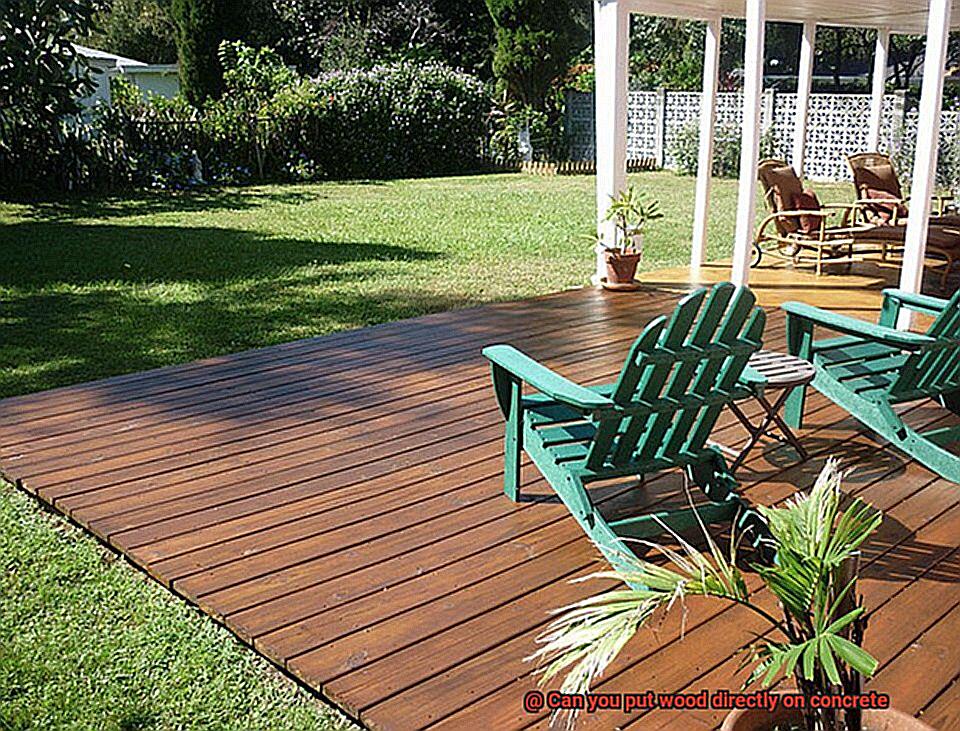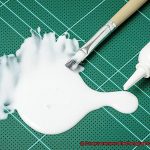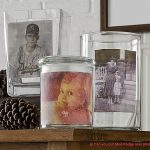Imagine this: you’ve just settled into your new space, filled with excitement about transforming it into your dream home. As you take in the room’s vastness, your eyes land on the cold, unyielding concrete floor beneath you. Suddenly, a brilliant idea strikes – why not bring the warmth and allure of wood into this space? But hold on…can you actually put wood directly on concrete?
Intriguing, right?
Contents
- 1 Types of Wood for Direct Installation on Concrete
- 2 Assessing the Condition of the Concrete Surface
- 3 Utilizing a Moisture Barrier
- 4 Adhesives for Wood-to-Concrete Applications
- 5 Benefits of Installing Wood Directly on Concrete
- 6 Potential Challenges with Installing Wood on Concrete
- 7 Alternatives to Installing Wood Directly on Concrete
- 8 Professional Installation Considerations
- 9 Conclusion
Wood and concrete may seem like they belong to different worlds, but in reality, their combination can result in breathtaking outcomes. From exquisite hardwood floors to trendy floating shelves, wood possesses an unmatched ability to infuse charm and personality into any area. However, before diving headfirst into this harmonious union, it’s crucial to grasp the practicalities and considerations involved.
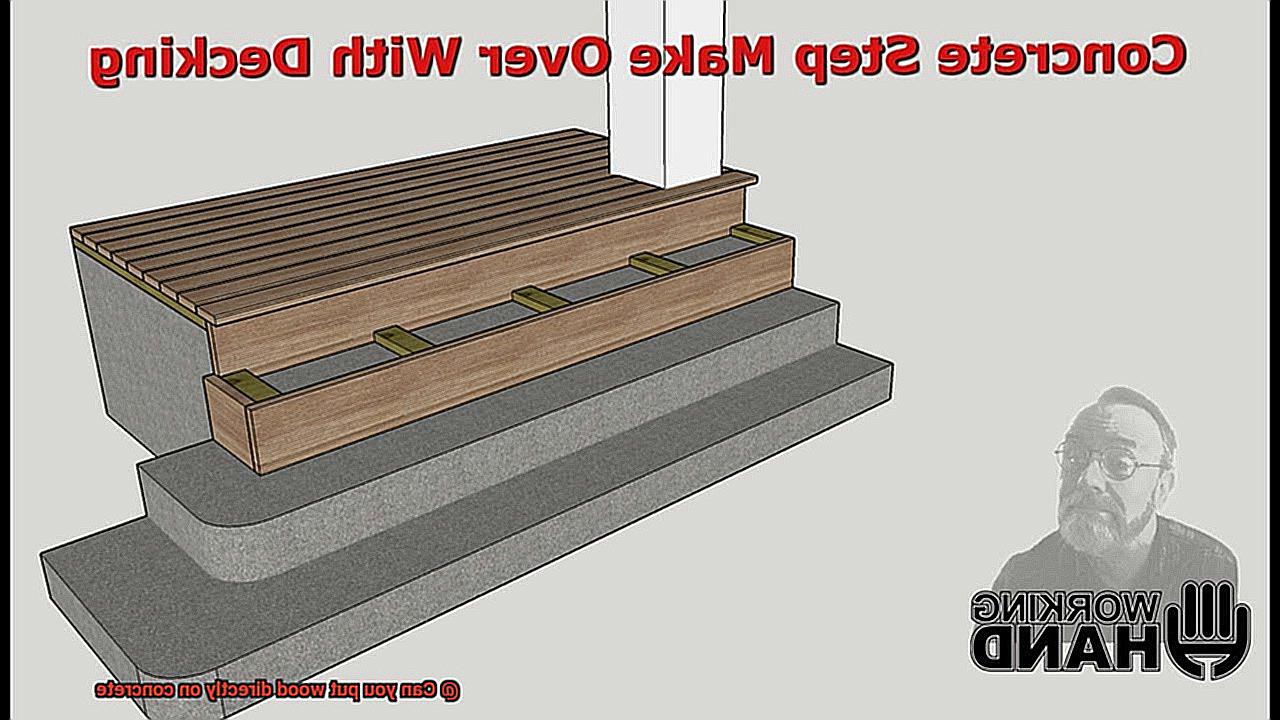
In this captivating blog post, we’ll unravel the mysteries surrounding the compatibility of wooden surfaces and concrete foundations. We’ll explore key points like moisture worries, leveling obstacles, installation techniques, and suitable wood types. By the end of this article, you’ll have a confident understanding of whether wood and concrete can truly embrace each other hand in hand.
So whether you’re a DIY enthusiast or an aspiring interior designer seeking unconventional inspiration, come along as we uncover the secrets behind combining wood and concrete. Get ready to be dazzled by the boundless possibilities hidden within this unexpected dance between materials.
Types of Wood for Direct Installation on Concrete
Wood is a versatile and popular material for construction and design projects. But can you put wood directly on concrete? The answer is yes, but it depends on the type of wood and the condition of the concrete. In this article, we will explore the best types of wood for direct installation on concrete and their associated benefits.
Let’s dive in.
Pressure-Treated Wood:
When it comes to direct installation on concrete, pressure-treated wood takes the crown. This wood is specially treated with chemicals that make it resistant to rot, decay, and insect damage. Whether you’re building a deck or a fence, pressure-treated wood can withstand the moisture from the ground and stand the test of time. It’s the perfect choice for outdoor projects, offering both durability and longevity.
Composite Wood:
Looking for the beauty of real wood without the maintenance? Look no further than composite wood. This innovative material is crafted from a blend of wood fibers and recycled plastic, creating a highly durable and moisture-resistant product. With a wide range of colors and styles available, composite wood allows you to achieve the look you desire without worrying about warping or decay. Whether you’re creating a backyard oasis or revamping your basement, composite wood is up to the challenge.
Engineered Wood:
If stability and strength are your priorities, engineered wood is an excellent choice for direct installation on concrete. This type of wood consists of multiple layers of real wood veneer bonded together, offering superior resistance to moisture and fluctuations in humidity. Engineered wood comes in various finishes and thicknesses, making it suitable for any project, from flooring in your living room to renovations in your office. Embrace the beauty of natural wood while ensuring stability in areas where concrete meets your design.
Laminate Flooring:
For an affordable and easy-to-maintain option for direct installation on concrete, laminate flooring is the way to go. Featuring a high-density fiberboard (HDF) core with a printed image of wood grain on top, laminate flooring provides both moisture resistance and aesthetic appeal. With its protective layer, laminate flooring can handle the everyday wear and tear of busy households while adding warmth and beauty to any space. Say goodbye to the worries of moisture damage and hello to hassle-free maintenance.
Luxury Vinyl Plank (LVP) Flooring:
For a rising star in the world of wood flooring, look no further than luxury vinyl plank (LVP) flooring. Made from synthetic materials, LVP offers the realistic look of wood while being highly resistant to moisture. This makes it an ideal choice for direct installation on concrete, especially in areas prone to moisture issues. With a wide range of styles and patterns available, you can achieve the elegant look of wood without compromising durability or worrying about water damage or warping.
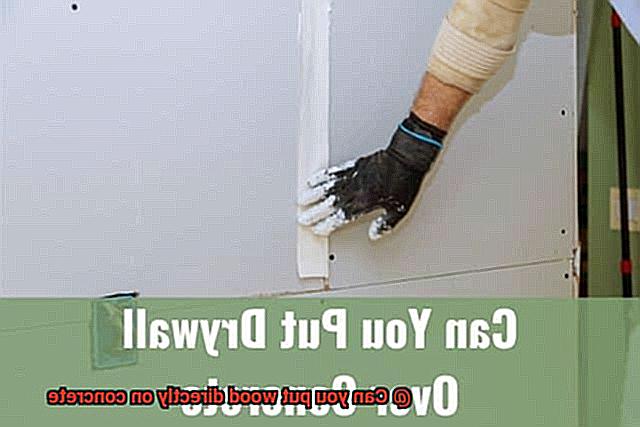
Assessing the Condition of the Concrete Surface
Before embarking on the exciting journey of placing wood directly on your concrete surface, it is crucial to assess its condition. This assessment will determine whether the concrete is suitable for supporting wood and guide you in making the necessary preparations. In this comprehensive guide, we will take you through each step of assessing the condition of your concrete surface, equipping you with the knowledge and confidence to proceed with your project.
Step 1: Visible Damage – The Telltale Signs
The first step in assessing your concrete surface is to carefully inspect it for any visible damage. Look out for cracks, spalling, or unevenness, as these can indicate underlying structural issues that may compromise the stability and integrity of the wood. Make a note of any cracks or signs of chipping or flaking on the surface.
Step 2: Moisture Issues – The Silent Threat
Moisture is a silent enemy when it comes to wood installations on concrete surfaces. To check for moisture, conduct a simple yet powerful test using plastic sheeting. Place a sheet of plastic on the concrete surface, tape down the edges, and leave it undisturbed for 24 hours. Afterward, carefully remove the plastic and check for condensation or dampness underneath. If moisture is present, it is essential to address waterproofing measures before proceeding with your wood installation.
Step 3: Smoothness and Levelness – The Foundation’s Stability
A smooth and level concrete surface is paramount for establishing a stable base that ensures even weight distribution and prevents warping or unevenness in your wood over time. Take note of any significant irregularities or rough patches on the concrete. If necessary, consider leveling or smoothing them out before proceeding to guarantee a solid foundation.
Step 4: Existing Coatings or Finishes – The Bonding Factor
Before laying wood directly on your concrete surface, evaluate any existing coatings or finishes. Paint, sealers, or adhesives can interfere with the proper bonding between wood and concrete. Assess their presence on the surface and take appropriate action, such as removing or preparing them, to ensure a seamless connection between the two materials.
Utilizing a Moisture Barrier
Picture this: you’ve poured your heart and soul into renovating your space with stunning wooden features. But lurking beneath is a silent enemy – concrete, ready to unleash its moisture and wreak havoc on your wood. Fear not. Armed with knowledge and the right tools, you can conquer this threat and protect your wood investment. In this captivating exploration, we delve into the world of moisture barriers and unveil the secrets of proper installation and maintenance for maximum defense.
The Vicious Cycle of Moisture:
Concrete may seem innocuous, but it conceals a diabolical secret – an insatiable thirst for moisture. When wood embraces concrete, water infiltrates the wood’s core, unleashing a host of horrors like rot, mold, and irreversible damage. Enter the moisture barrier – the valiant hero that safeguards against these malevolent forces.
A Plethora of Protective Shields:
Moisture barriers come in diverse forms, each wielding unique strengths to shield your wood investment. Plastic sheets, fashioned from dependable polyethylene, erect a physical barrier, thwarting moisture’s advances towards your precious wood. Rubber membranes, crafted from synthetic rubber, create an impenetrable waterproof layer that denies water any access to the wood. Lastly, liquid-applied coatings form an impervious seal when expertly brushed or rolled onto the concrete surface.
Installation Mastery for Invincibility:
For an impregnable moisture barrier, meticulous installation is paramount. Heed the manufacturer’s instructions with unwavering precision, ensuring meticulous sealing of seams and joints. This meticulous approach erects an impenetrable fortress against moisture intrusion.
Wood Wisdom: Choose Wisely:
While some wood types possess inherent resistance to moisture, most benefit from an additional moisture barrier. Consider your wood’s specific needs when selecting the ideal barrier to fortify its defenses against moisture-related perils.
Maintenance: The Key to Everlasting Vigilance:
Like any formidable champion, your moisture barrier demands regular maintenance to preserve its unwavering strength. Conduct periodic inspections, scrutinizing every inch for signs of wear and tear. Should you spot any vulnerabilities, act swiftly to maintain the barrier’s impenetrable shield.
Adhesives for Wood-to-Concrete Applications
Imagine a world where wood and concrete unite in perfect harmony, creating a bond that withstands the test of time. With the right adhesive and surface preparation, this dream can become a reality. In this captivating article, we will delve into the fascinating realm of wood-to-concrete applications, exploring the various types of adhesives and techniques that ensure a strong and durable bond. So, grab a seat and prepare to be amazed.
Choosing the Perfect Adhesive:
Not all adhesives are created equal when it comes to wood-to-concrete bonding. Let’s explore two remarkable options:
- Epoxy Adhesive: With its exceptional bonding strength and resistance to moisture and temperature changes, epoxy adhesive reigns supreme. It grants you the luxury of a long working time, allowing for precise application and adjustment before the bond sets. Whether it’s an indoor or outdoor project, epoxy adhesive has got your back.
- Polyurethane Adhesive: For those tackling high-moisture environments or outdoor applications, polyurethane adhesive is the ultimate sidekick. Its flexibility and resistance to moisture make it a formidable choice. Not only does it provide a strong bond, but it also excels at filling gaps like a pro.
Surface Preparation: The Unsung Hero
Before we embark on our bonding journey, let’s give a nod to the unsung hero – surface preparation.
- Cleanliness is Key: To achieve a flawless bond, ensure your concrete surface is clean, dry, and free from loose particles or contaminants. A quick sweep or vacuum will suffice in banishing any unwanted debris.
- Bid Farewell to Coatings: Remove any existing coatings or sealants from the concrete surface before applying the adhesive. These sneaky culprits can compromise the bond’s strength and durability.
- Test the Waters: Before fully committing, conduct a small test to ensure compatibility and adhesion. This preliminary experiment will unveil any potential issues or adjustments that need to be made for a successful bond.
Application Techniques: Bonding with Precision
Now that our surfaces are prepared and our adhesive selected, it’s time to work our magic.
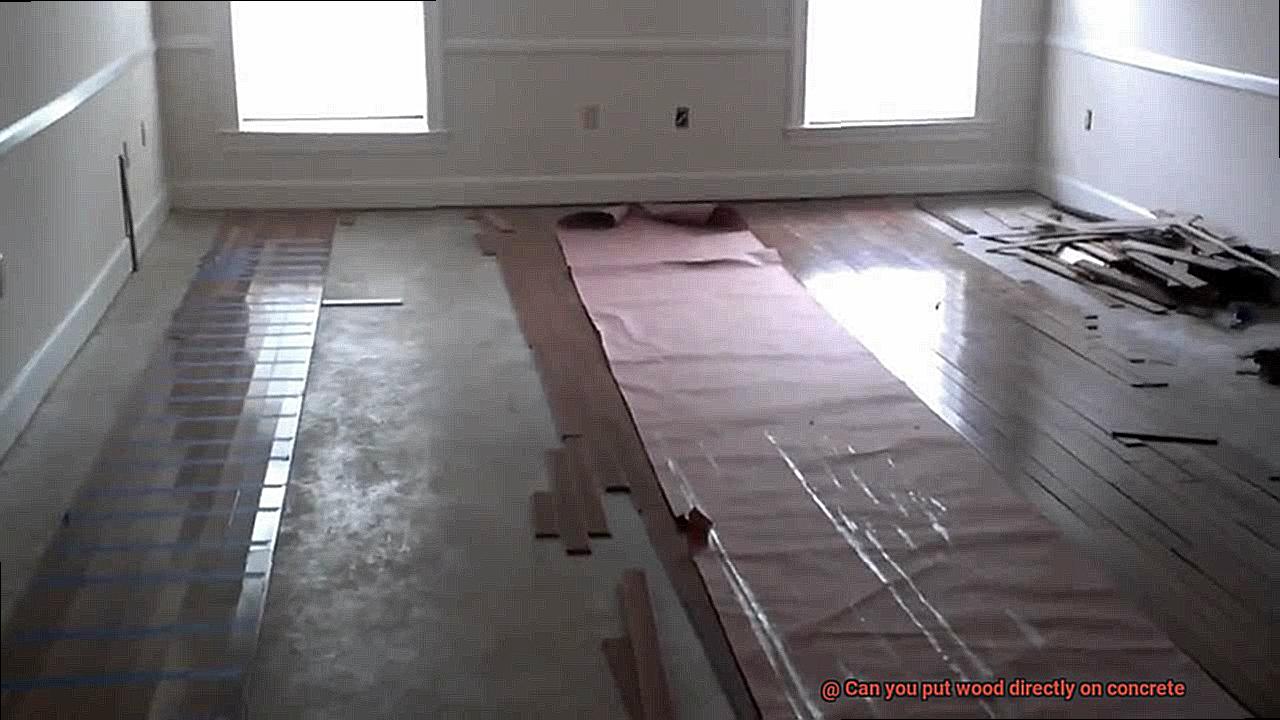
Follow the Instructions: Adhesive manufacturers are wise sages, providing us with step-by-step instructions for successful bonding. Adhere to their guidance regarding application techniques, curing or drying time, and the amount of adhesive to be used.
Benefits of Installing Wood Directly on Concrete
Well, we’ve got some exciting news for you. Installing wood directly on concrete can be a game-changer, transforming your space in more ways than one. Let’s dive into the captivating benefits that will make you wonder why you didn’t do it sooner.
First and foremost, let’s talk about insulation. We all know how bone-chilling those concrete floors can be, especially during the frigid winter months. But by installing wood directly on concrete, you’re not only adding a touch of warmth and coziness, but you’re also boosting insulation. Wood acts as a natural insulator, keeping the heat in and the cold out. Say goodbye to freezing toes and hello to cozy evenings spent by the fireplace.
But it’s not just about comfort; it’s about aesthetics too. Wood flooring has an undeniable charm and beauty that instantly elevates any space. Walking into a room with stunning wood floors adds character and creates an inviting atmosphere. From rustic farmhouse designs to sleek modern styles, wood flooring offers endless possibilities to match your personal taste. It’s like having a blank canvas waiting for your creative touch.
Of course, we can’t overlook the durability factor. Wood is renowned for its strength and longevity, making it an excellent choice for flooring. By installing wood directly on concrete, you’re protecting it from moisture, which can cause warping, rotting, or even mold growth. This makes it perfect for areas prone to high humidity or moisture, such as basements or bathrooms. Say goodbye to worrying about damage and hello to a solid foundation that can withstand whatever life throws at it.
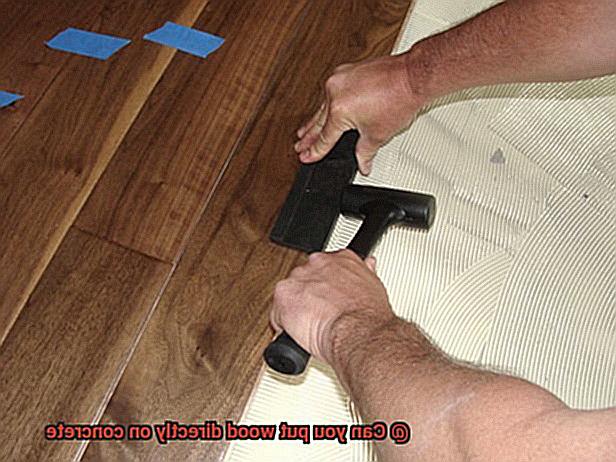
Now let’s address the noise issue. If you live in a multi-story building or have multiple floors in your home, you understand the frustration of hearing every footstep from above or below. But fear not. Wood flooring acts as a fantastic sound barrier, reducing noise transmission between floors or rooms. Enjoy peace and tranquility in your own space without disturbing your neighbors.
Potential Challenges with Installing Wood on Concrete
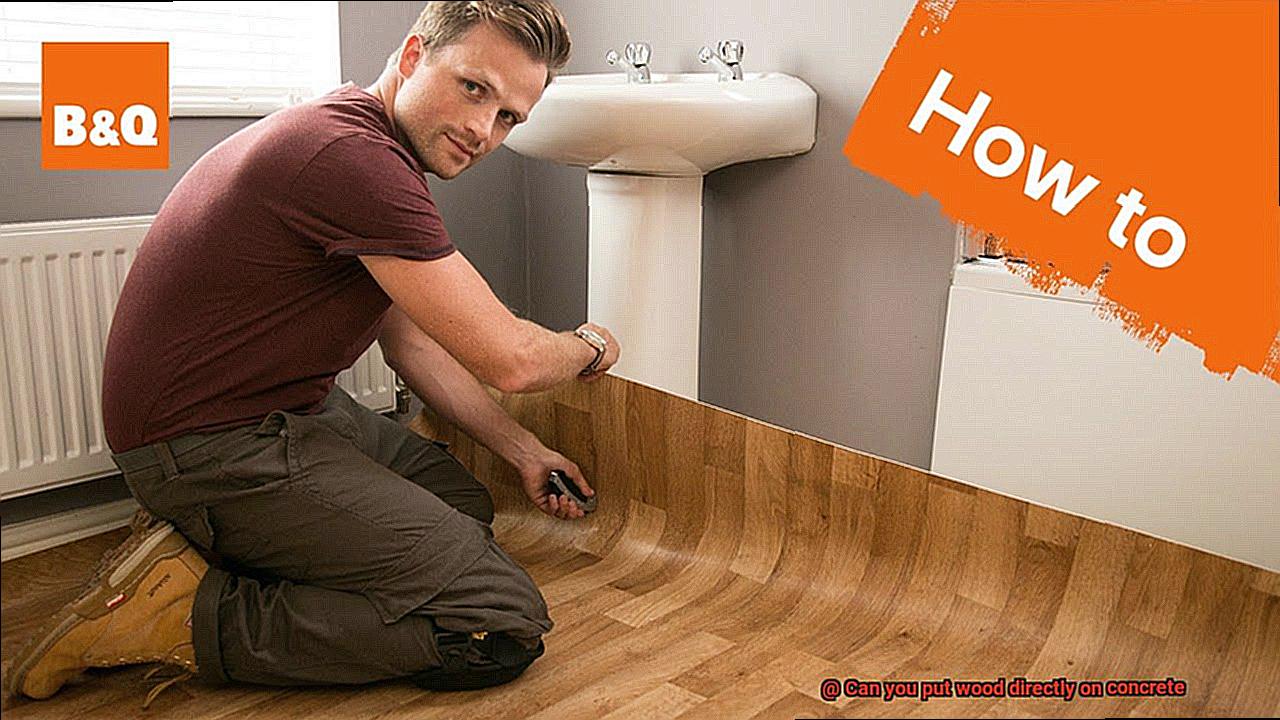
You’re ready to embark on a journey of transforming your space into a cozy oasis by installing wood directly on concrete. However, before you dive headfirst into this exciting project, it’s essential to understand the potential challenges that lie ahead. In this article, we will explore the hurdles you may encounter when installing wood on concrete and provide insights to help you overcome them.
So, let’s roll up our sleeves and delve into these challenges together.
The Moisture Menace:
Concrete’s porous nature poses a significant challenge when it comes to moisture. If the concrete is not properly sealed or contains cracks, it becomes a breeding ground for moisture absorption and retention. Over time, this can lead to mold, mildew, and rot in the wood, compromising its structural integrity. Furthermore, moisture can cause the wood to warp, buckle, or cup, creating an unappealing and unstable surface.
The Air Circulation Conundrum:
Installing wood directly on concrete often leads to a lack of air circulation beneath the wood. This absence of proper ventilation traps moisture, aggravating the aforementioned issues. With inadequate airflow, the wood struggles to dry effectively, intensifying the problem and increasing the risk of damage.
Uneven Terrain Troubles:
Concrete surfaces rarely boast perfect flatness or levelness. Even slight variations can spell trouble during wood installation. An uneven surface can result in gaps or raised areas in the flooring, detracting from a professional finish and posing potential tripping hazards.
Defying Gravity: Adhesion Issues
Wood and concrete do not naturally adhere well to each other. Without proper adhesion, the wood may shift or separate from the concrete over time. This not only creates an unsightly appearance but also poses a safety risk with loose or unstable flooring.
Dance of Expansion and Contraction:
Wood and concrete possess different thermal properties, expanding and contracting at different rates in response to temperature changes. When installed directly on concrete, the wood may not have sufficient space to expand or contract freely. Consequently, this can lead to warping or buckling, particularly in areas with significant temperature fluctuations.
Alternatives to Installing Wood Directly on Concrete
Before you embark on this journey, it’s crucial to understand the potential challenges that arise when installing wood directly on concrete. Fear not, for we have curated a list of alternatives that will not only help you achieve the aesthetic you desire but also safeguard against moisture-related issues. So, let’s delve into these fascinating alternatives and bid farewell to your moisture woes.
Sleepers or Subflooring:
Elevate your wood flooring game with sleepers or subflooring. These pressure-treated lumber pieces create a raised platform directly on the concrete surface, allowing for improved airflow and insulation. Say goodbye to moisture buildup and potential damage, as sleepers minimize these risks and ensure your wood remains in pristine condition.
Engineered Wood Flooring:
Experience the wonders of technology with engineered wood flooring. Crafted from multiple layers of wood veneer bonded together using cutting-edge adhesives, this type of flooring boasts superior moisture resistance compared to solid wood flooring. Installing engineered wood on concrete provides a reliable and durable solution without compromising on aesthetics.
Interlocking Wood Flooring Systems:
Unleash the power of convenience with interlocking wood flooring systems. These ingenious systems feature prefinished wood planks or tiles equipped with interlocking mechanisms, eliminating the need for messy adhesives or nails. Not only does this offer a seamless installation process, but it also allows for effortless maintenance and swift replacement of damaged pieces.
Vinyl or Laminate Flooring:
Embrace a cost-effective and low-maintenance alternative with vinyl or laminate flooring that mimics the timeless beauty of wood. Specifically designed for concrete surfaces, these resilient flooring options offer exceptional durability and moisture resistance. With vinyl or laminate flooring, you can indulge in the aesthetic allure of wood while enjoying hassle-free maintenance.
Moisture Mitigation Measures:
Before you embark on your flooring adventure, it’s imperative to prioritize moisture mitigation measures. Shield your investment by incorporating moisture barriers such as vapor retarders or moisture-resistant underlayments. These precautions ensure that moisture remains at bay, safeguarding your wood-like flooring and preserving its charm for years to come.
Professional Installation Considerations
Embarking on the journey of transforming your concrete space into a warm and inviting oasis with the elegance of wood flooring is an exhilarating endeavor. However, the path to success lies in understanding the intricate considerations that professional installers swear by when working with wood directly on concrete. In this enlightening article, we will delve into the pivotal factors that skilled installers take into account. From meticulous moisture management to meticulous subfloor preparation and adhesive artistry, we leave no stone unturned.
Moisture Levels:
The relentless nemesis of wood flooring, moisture, looms large when it comes to installations on concrete. Concrete’s porous nature readily absorbs and retains moisture, spelling potential disaster for your wooden masterpiece. To preempt this catastrophe, it is imperative to gauge the moisture levels in your concrete before commencing installation. Seasoned professionals possess the tools and expertise to accurately assess these levels and prescribe additional measures if necessary, ensuring a watertight defense against any future risks.
Subfloor Preparation:
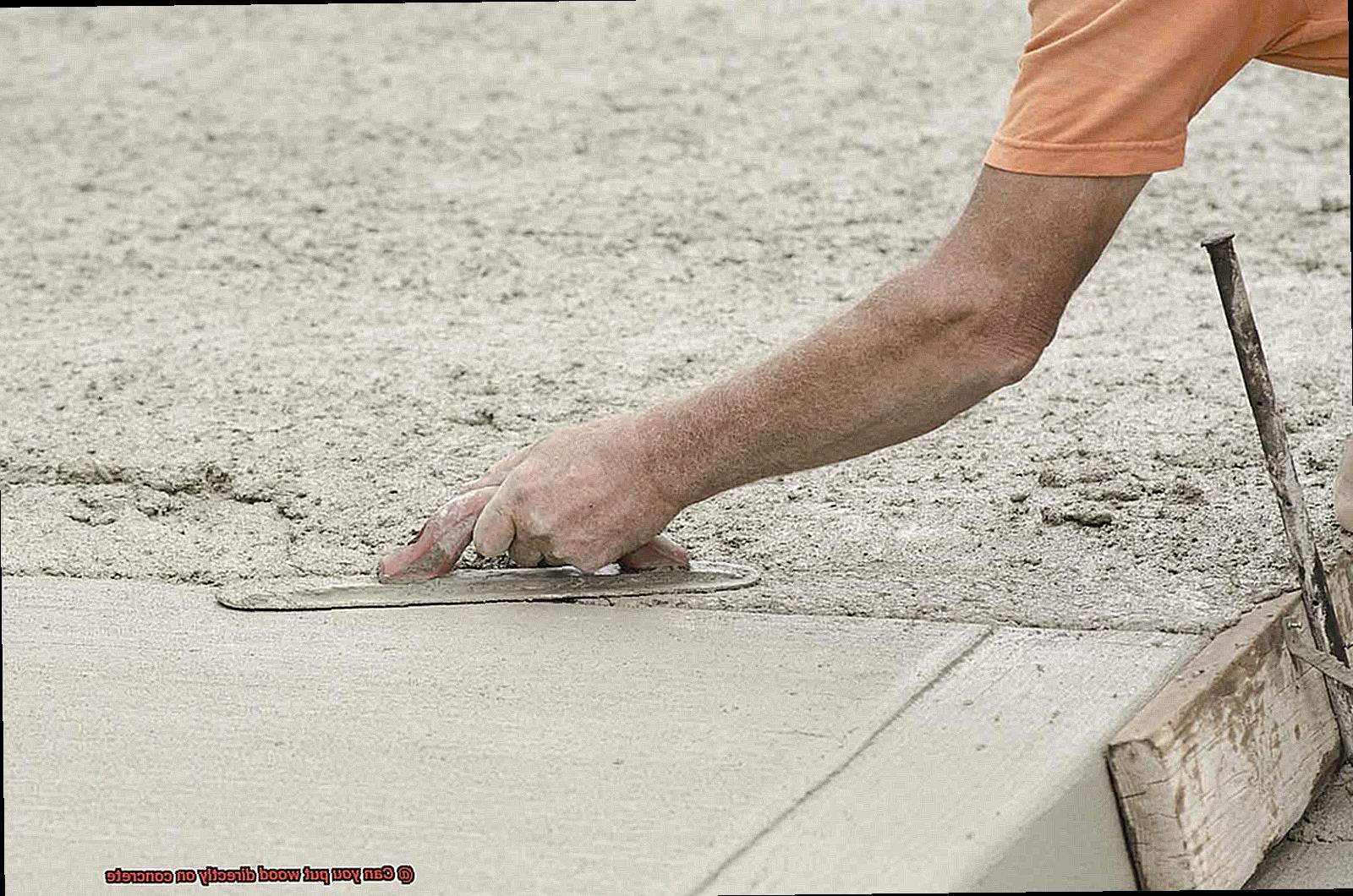
The bedrock of a successful wood flooring installation on concrete lies in meticulous subfloor preparation. Before allowing your resplendent wooden planks to grace the surface, diligent cleaning of the concrete is paramount.
Every mote of dirt, speck of dust, and fragment of debris must be banished to ensure unyielding adhesion between the wood and concrete. Furthermore, addressing any imperfections such as unevenness or cracks is pivotal in creating a smooth and level foundation that will stand the test of time.
Adhesive Selection:
The adhesive you choose wields tremendous power when it comes to installing wood directly on concrete. Specially formulated adhesives exist for this precise purpose, forging an unbreakable bond between wood and concrete.
It is crucial to select an adhesive that aligns with both the type of wood you are using and the specific conditions of your installation area. Seasoned professionals, armed with their vast knowledge and experience, will guide you to the adhesive that promises unwavering strength and durability for your project.
t_bcaSJy8bs” >
Conclusion
Yes, you can put wood directly on concrete.
However, there are a few important factors to consider. First, it is crucial to ensure that the concrete surface is clean and smooth before laying the wood.
Any dirt or debris can cause unevenness and compromise the integrity of the wood. Additionally, moisture can be a significant issue when placing wood on concrete.
Moisture can seep up from the concrete and lead to rotting or warping of the wood over time. To prevent this, it is essential to use a moisture barrier, such as a plastic sheet or vapor barrier paint, between the concrete and wood.
Another consideration is insulation. Concrete tends to be cold, so adding an insulating layer between the two materials can help regulate temperature and provide added comfort.
Lastly, using pressure-treated or rot-resistant wood is advisable for durability and longevity when placing wood directly on concrete. In conclusion, while it is possible to put wood directly on concrete, proper preparation and precautions are necessary for success.
Ensuring a clean surface, addressing moisture concerns with a moisture barrier, considering insulation options for temperature regulation, and using durable materials will help create a stable and long-lasting foundation for your wooden flooring or structure on concrete.

